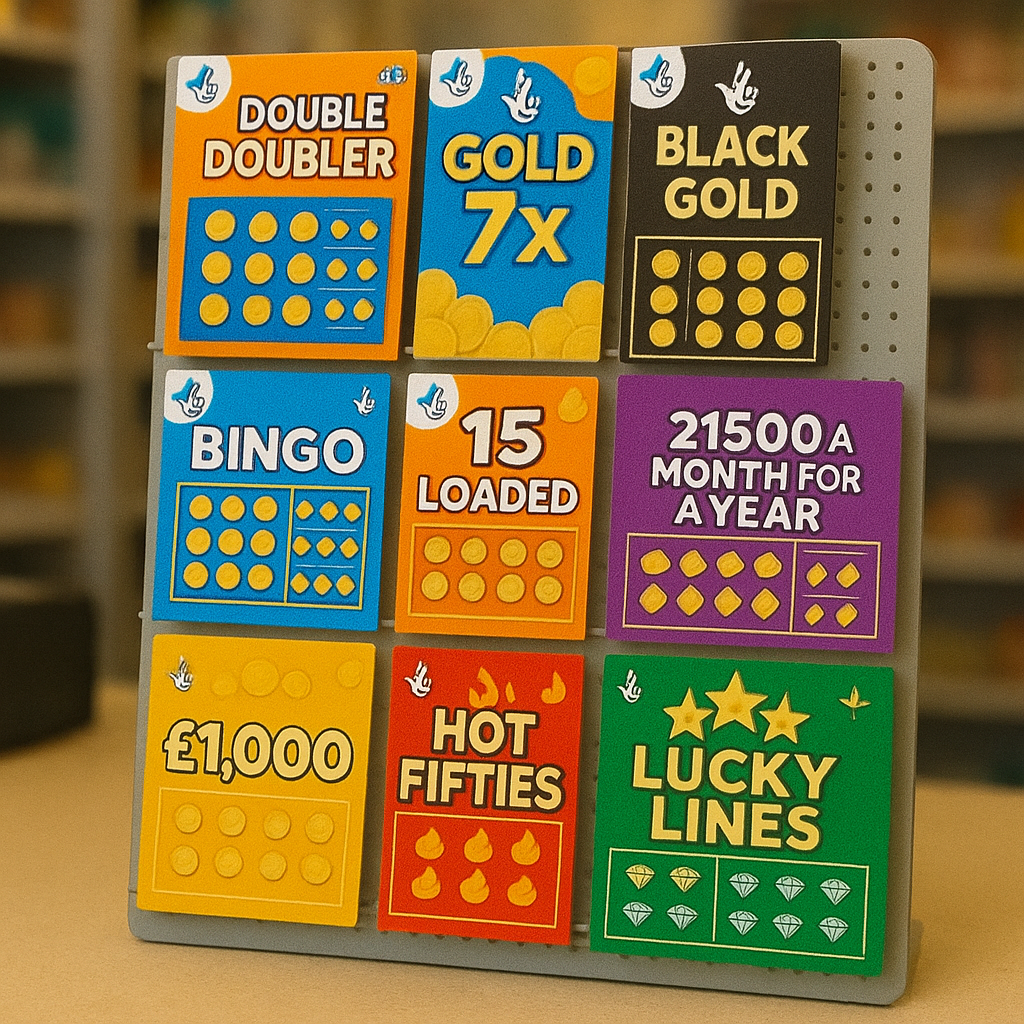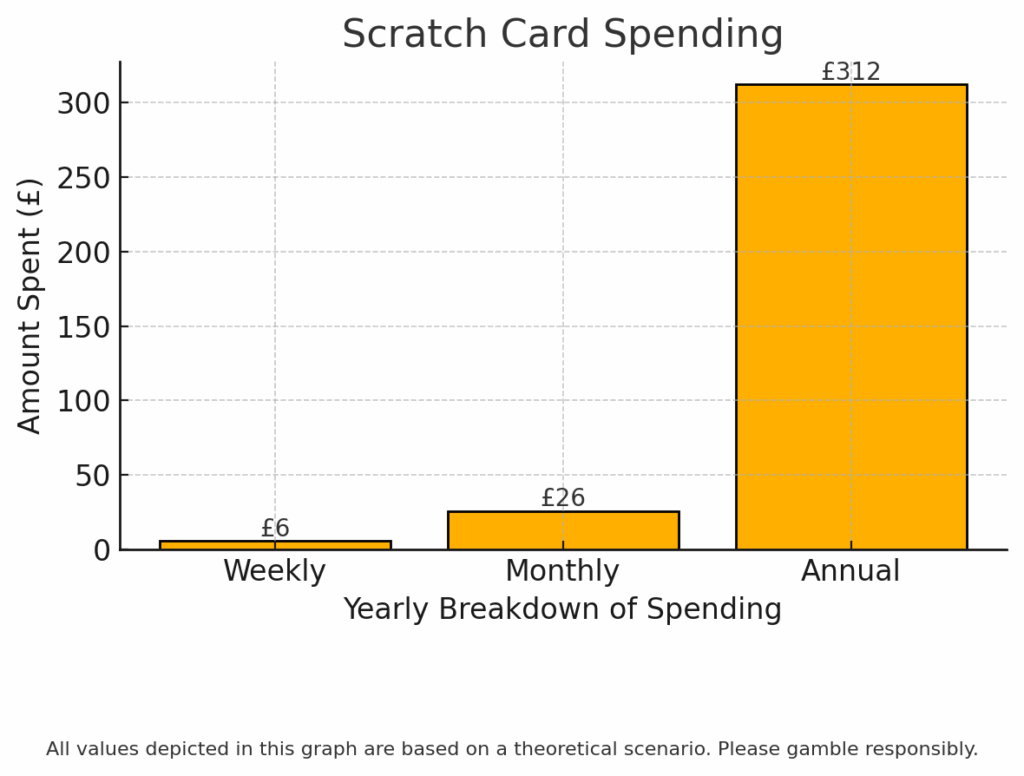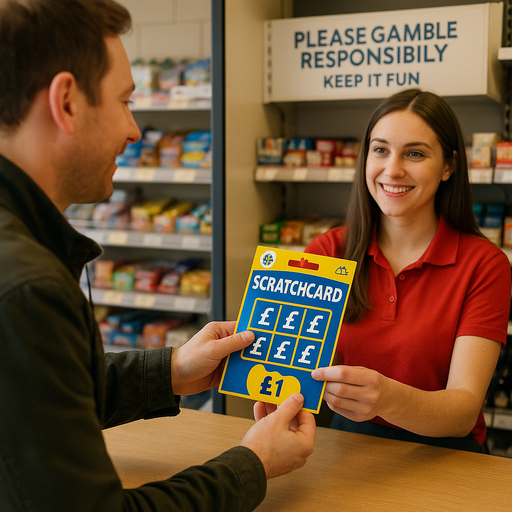How Much Do We Spend On Scratchcards In The UK Each Year?
Scratchcards, those shiny rectangles tucked by the till in nearly every corner shop, are especially popular in Britain.
Easy to buy, fast to play, and offering the thrill of an instant result, they’ve become one of the most popular forms of gambling in the UK.
But how much do we actually spend on them? And what does our scratchcard habit say about us as a nation?
A Peek Behind the Scratchcard Craze
Scratchcards aren’t just a casual punt — they’re a serious business. Figures from the National Lottery show that scratchcards and instant-win games racked up over £4 billion in sales during 2023 to 2024 alone.
That’s not just pocket change. It’s a figure that places scratchcards firmly among the UK’s most-used gambling products, behind only draw-based lottery games and some sports betting categories.
So what makes them so appealing?
Scratchcards deliver instant results. Unlike lottery draws or accumulator bets, there’s no waiting around. You find out immediately whether you’ve won or not.
For many, it’s this immediacy that creates the buzz. It’s quick, cheap and convenient — and that, unfortunately, also makes it addictive to many. This is why it is important to always remember to play responsibly, maintain realistic expectations around winning, and only participate if you can afford to.

Who’s Buying?
The popularity of scratchcards cuts across age, class and geography, but research suggests certain groups are more inclined to reach for that silvery scratch-off panel.
Studies show that younger adults, particularly those aged 18 to 34, are more likely to buy scratchcards regularly. The same goes for people living in lower-income households, where the lure of a low-cost chance at a substantial win can feel especially tempting.
It’s important to recognise that for some, scratchcards represent more than a bit of fun — they can be tied to financial hope, however small the odds may be. However, it’s crucial to remember that winning is never guaranteed, and gambling in any form should not be viewed as a source of income.
How Much Are We Really Spending?
UK adults are estimated to spend between £150 and £200 per year on scratchcards on average. But averages can be misleading.
Consider someone who buys just two £3 scratchcards a week. That’s £6 per week, which comes to more than £300 a year. Multiply that by the millions of regular players across the country and it becomes clear how the industry generates over £4 billion annually.
What may seem like small, occasional purchases can quickly add up, both for individuals and at a national level.

The Bigger Picture: Funding For Good Causes
While scratchcards are still a form of gambling and should always be approached with caution, there is a silver lining to their popularity.
Thanks to the way National Lottery products are structured, around 28% of every pound spent on scratchcards goes to good causes. That includes funding for local sports facilities, youth programmes, heritage conservation, health initiatives and arts projects.
These contributions provide vital support to communities up and down the country, many of which rely on lottery funding to keep essential services running.

The Takeaway: A Thriving UK Scratchcard Industry
Britain’s annual spend on scratchcards, well over £4 billion, reflects how deeply embedded these games are in everyday life for many.
They’re simple, cheap and available almost everywhere, from your corner shop to your supermarket petrol station, which makes them easy to play.
They also offer a lower barrier to entry than other forms of gambling, allowing people to get involved with relatively low stakes.
That said, it’s important to recognise that scratchcards, like all gambling products, carry risks. What starts as a harmless flutter can become a costly habit if not approached with care.
Understanding how and why people play, and how much they’re spending, is key to keeping scratchcard play within sensible limits. Always gamble responsibly and within your means.
**The information provided in this blog is intended for educational purposes and should not be construed as betting advice or a guarantee of success. Always gamble responsibly.
